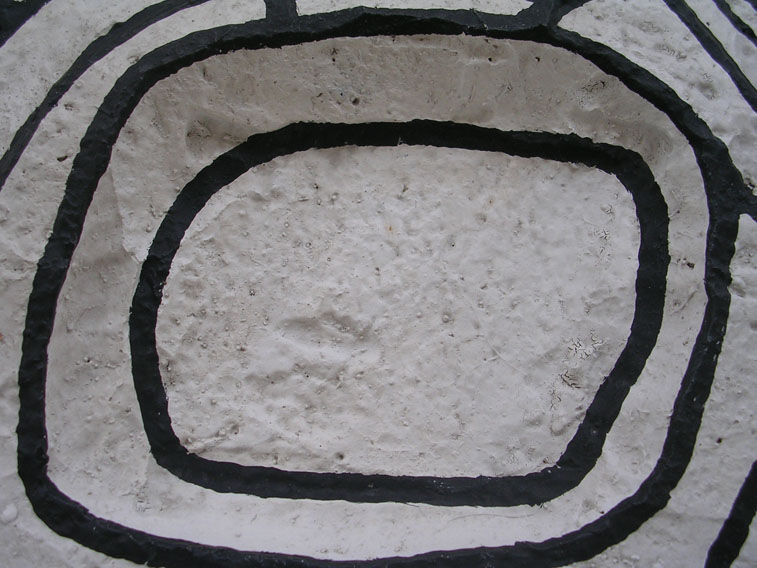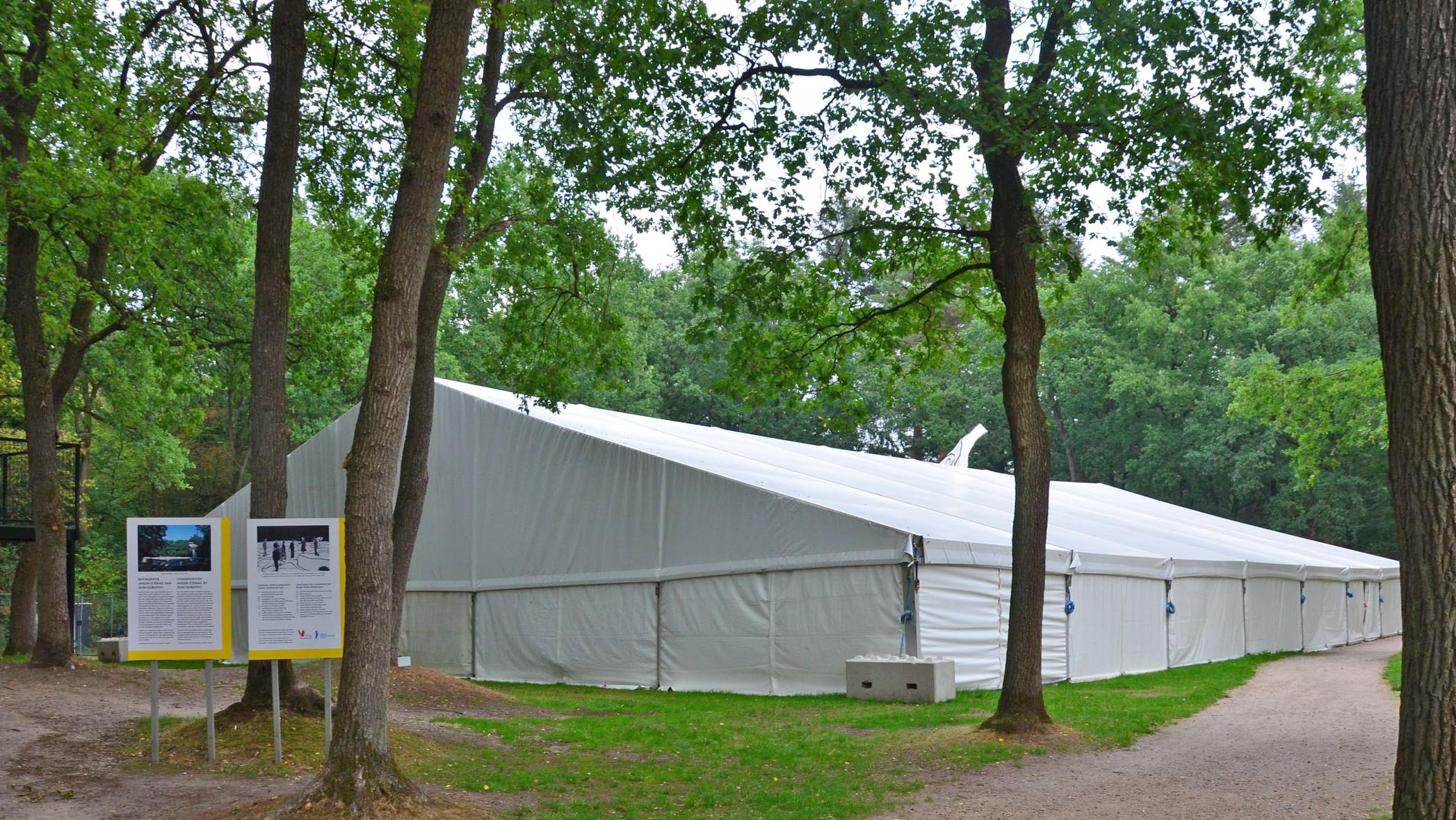 The museum’s conservator of modern art, Susanne Kensche, is in charge of this extensive project. She says: 'Jardin d’émail has a number of fundamental problems, including structural issues. Maintenance of the work has been challenging from the outset and problems soon arose that were mainly visible in the paint layer. The work of art can actually be regarded as a building, but at the same time it is also a kind of three-dimensional painting; a concrete Rembrandt’.
The museum’s conservator of modern art, Susanne Kensche, is in charge of this extensive project. She says: 'Jardin d’émail has a number of fundamental problems, including structural issues. Maintenance of the work has been challenging from the outset and problems soon arose that were mainly visible in the paint layer. The work of art can actually be regarded as a building, but at the same time it is also a kind of three-dimensional painting; a concrete Rembrandt’.
The conservation progressed smoothly and was completed in May 2020. The concrete structure has been restored and further reinforced. The renewed drainage system protects the work against water damage. The original structure of the surface has been restored using original techniques, but with improved materials and durable paint. The picturesque character of the black lines has been recreated, whereby the intention of the artist was of paramount importance.
Susanne Kensche: 'In previous repaints, the original black lines were not maintained everywhere. The new conservation therefore involved close collaboration with the Fondation Dubuffet in Paris and the artist’s assistant, who painted the black lines on Jardin d’émail in 1974.’
After the removal of the work tent, the nearly eight-metre-tall ‘tree’ was cleaned. The canopy is the only part of the entire artwork that still has the original paint layers from 1974. This made it an important reference for the desired appearance of Jardin d’émail.
After five years of research and conservation, Jardin d’émail is once again the magnificent centrepiece of the sculpture garden. For the next fifty years, everyone can fully enjoy this unique work of art, an artificial black and white world in the midst of nature. It is one of the few works of art that you can touch and walk upon. A work that is not only to be viewed from the outside, but that visitors must enter to truly experience it.
The Kröller-Müller Museum thanks everyone who has contributed to the conservation of Jardin d’émail, whereby this monumental work of art has been preserved for current and future generations.
Different opening hours for Jardin d’émail
Jardin d'émail is accessible from 1 April to 1 November, but only when the surface is completely dry. The work is closed for maintenance every last Monday of the month. It is also inaccessible during or shortly after rainfall, due to the risk of slipperiness.
In order to keep the artwork in good condition for as long as possible, regular inspection, maintenance and cleaning is required. We do this every last Monday of the month. For example, the drains are cleaned and the entire work is washed and scrubbed with water. Afterwards, the work has to dry before it is safe for visitors again.

MORE ABOUT THE CONSERVATION
The conservation of ‘a concrete Rembrandt’ 2016 – 2020
After two years of literally probing research into the condition and construction history of the work, in 2016 it was decided to carry out a major conservation of this three-dimensional painting. The drainage system was the first to be renewed. Then all the layers of paint were removed, making the cracks and other damage to the concrete wall and surface visible. In 2017 the concrete of this 600 m² work was restored, cracks were filled in and the concrete surface was repaired. In the late summer of 2018 the work was enclosed in a tent, to allow the concrete to dry properly and so that work could continue in bad weather.  A new layer of shotcrete was applied in 2019 and the research into the desired new paint layer was completed. In the first months of 2020, a team of experienced painters applied no less than four layers of white paint in a six-week period. After that, the most spectacular part of the conservation could begin: the application of the characteristic black lines.
A new layer of shotcrete was applied in 2019 and the research into the desired new paint layer was completed. In the first months of 2020, a team of experienced painters applied no less than four layers of white paint in a six-week period. After that, the most spectacular part of the conservation could begin: the application of the characteristic black lines.
Susanne Kensche: ‘Maintaining the original shape of the relief is the biggest technical challenge here. With the current knowledge of durable paint systems, it is possible to apply a more long-lasting and hard-wearing layer to the work. It is very important to maintain the original intentions of the artist in this.’
One element of the conservation was to improve the immediate surroundings of Jardin d’émail. A new path has been constructed with better drainage. The entrance to the work, the doorway and the stairs to the plateau have been addressed. The two ‘bushes’ have also been repainted.
Would you like to read about all the steps that were taken in the conservation process? Click here for the project plan with a description of the 12 phases (Dutch only).
You and Jardin d’émail
To celebrate the reopening of Jardin d’émail, we asked our followers on social media to share their favourite memory or photo. The result? A mailbox full of beautiful photos, family snapshots and anecdotes, from the seventies to the present day. Click on the photos below and enjoy!
 Images: Damaged paint layers of Jardin d'émail / Application of the black lines on Jardin d'émail / protective tent covering Jardin d'émail / Compilation of visitor photos, multiple dates
Images: Damaged paint layers of Jardin d'émail / Application of the black lines on Jardin d'émail / protective tent covering Jardin d'émail / Compilation of visitor photos, multiple dates
Reopening 2020
After 5 years of conservation work, this imposing artwork by Jean Dubuffet is gleaming again. Touching Jardin d’émail, walking on it and even playing there is allowed!
The conservation is made possible by:
